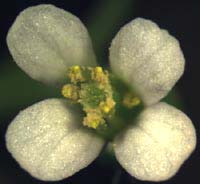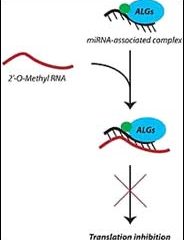Life Sciences and Chemistry
Articles and reports from the Life Sciences and chemistry area deal with applied and basic research into modern biology, chemistry and human medicine.
Valuable information can be found on a range of life sciences fields including bacteriology, biochemistry, bionics, bioinformatics, biophysics, biotechnology, genetics, geobotany, human biology, marine biology, microbiology, molecular biology, cellular biology, zoology, bioinorganic chemistry, microchemistry and environmental chemistry.

Researchers map ’super-tree’ of flowering plants, solving Darwin’s "abominable mystery"
The secret of how flowering plants evolved into one of the Earth’s most dominant and diverse groups of organisms is revealed in study led by researchers from the Royal Botanic Gardens, Kew and Imperial College London.
Described by Charles Darwin as an “abominable mystery”, the team publish the first complete evolutionary ’super-tree’ of relationships among all families of flowering plants in current edition of the Proceedings of the National Academy of Science.
Using a combination

Sophisticated silencing strategies
Since small RNA molecules were discovered just over ten years ago, it has become clear that these once overlooked bits of genetic material play a decidedly large role in controlling gene expression and thus regulating a diverse array of cellular processes. They typically accomplish these tasks by targeting specific nucleotide sequences to shut down gene expression, and scientists are now starting to apply related strategies to inactivate specific genes for research and therapeutic purposes (see rela

Exploring small RNA function
Regulation of gene expression–deciding how much of what proteins are produced in the cell–is controlled by a myriad of different molecules. One type of naturally occurring regulatory molecule is small interfering RNA (siRNA), which selectively disrupts the production of a protein it is programmed to recognize, a process called RNA interference. These short stretches of nucleotides combine with other cellular proteins to form an RNA-induced silencing complex, called RISC, which locates and destroys

Despite confinement, crop genes can spread fast to wild
With the slim chance that farmers will stop planting crops containing genes from other organisms, researchers have started to develop strategies that trap these foreign genes, reducing the risk that they’ll spread to wild relatives.
But an investigation by scientists from the University of Wisconsin-Madison and the University of Minnesota-St. Paul shows that these containment strategies can quickly fail.
Using mathematical models, the team of scientists explored the effective

USC researchers produce a hairier mouse
Transgenic mouse shows other intriguing physiological changes
A transgenic mouse designed to grow more hair than other mice has provided University of Southern California researchers with some surprising results-and insight into the development and regulation of growth in epithelial organs that extend beyond skin and hair.
In an upcoming paper in the American Journal of Pathology—now available online—Cheng-Ming Chuong, M.D., Ph.D., professor of pathology at the Keck School o

Computer method identifies potentially active enzymes
Better drugs, improved industrial applications and even cleaner laundry may be possible with a new computer method to predict which hybrid enzymes are likely to have high activity, according to a team of Penn State chemists and chemical engineers.
“FamClash is quite successful at qualitatively predicting the pattern of the specific activity of the hybrids,” the researchers report in this week’s online issue of the Proceedings of the National Academy of Sciences. “By identifying incompat